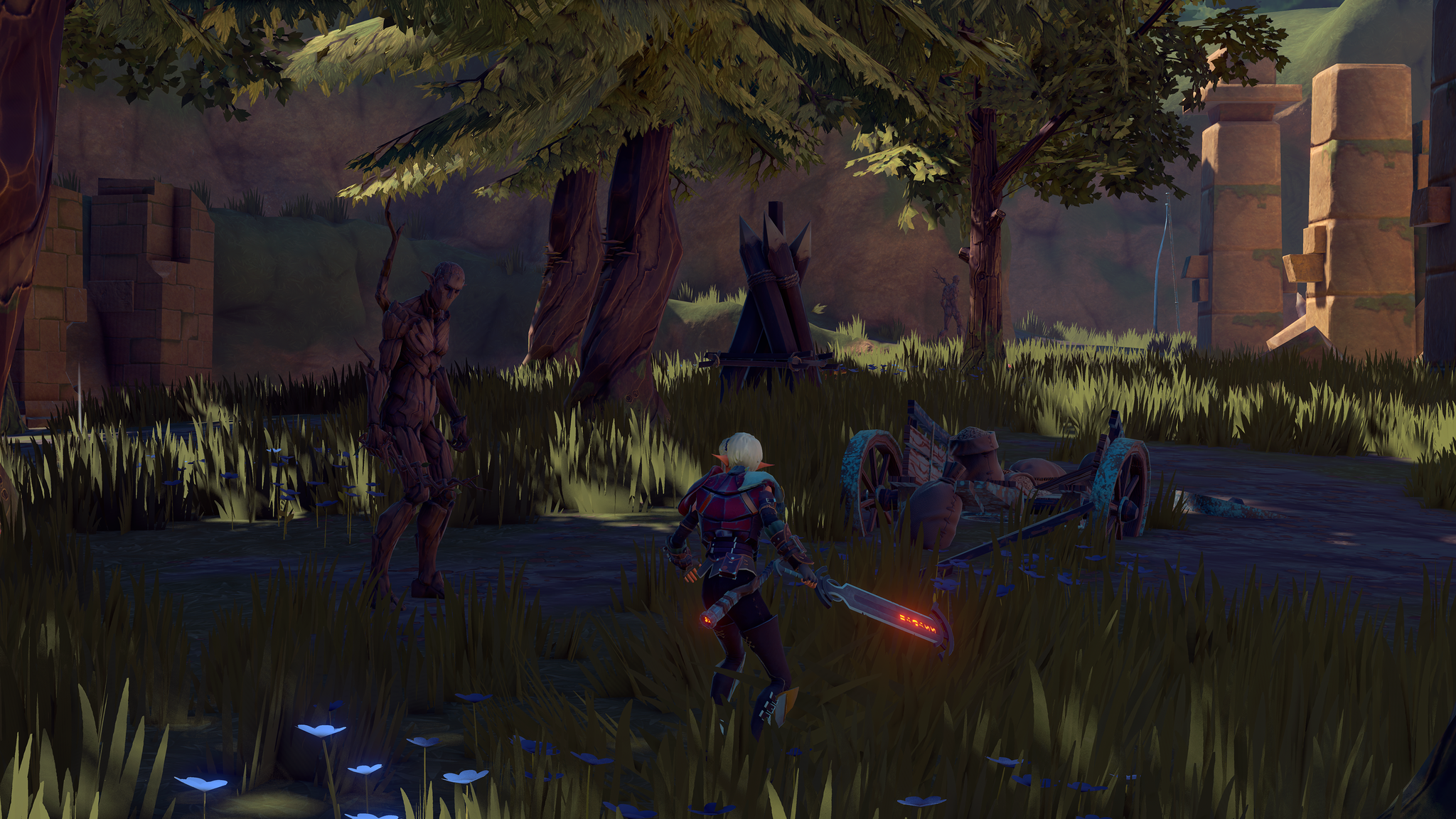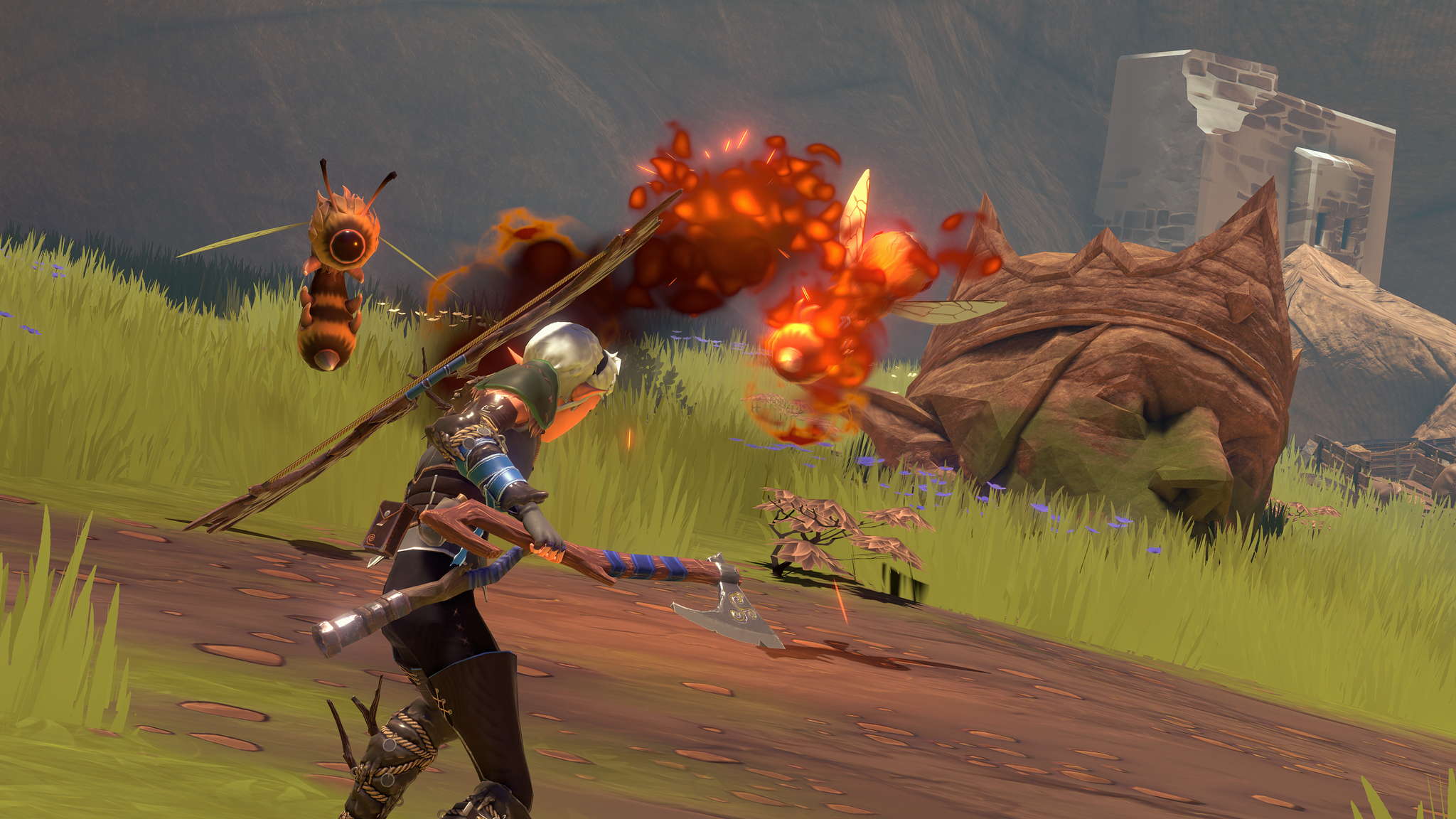There’s nothing quite like a grand adventure in video gaming; trekking from verdant fields to snow-dusted mountains and back again is a feeling like no other, and the Nintendo Switch already has many different worlds to explore. That said, it’s always fun to jump into a new setting and uncover its secrets, and the upcoming indie title Decay of Logos seems like it’s full of them.
Help from an Elk
On the surface, Decay of Logos seems very minimalistic, with a very solid and scaleable art style, but when it all comes together it’s quite the sight to behold, and one that has parity across the different platforms it will release on – I was told during my time with the demo that the general assets will be shared across the PlayStation 4 and Switch versions. It also means the game can show some pretty stunning vistas without taxing the hardware too much, with one massive tower standing in the distance of an early area which you can supposedly walk to with no loading screens on the way… Assuming you don’t die.

But death is a constant threat. Mechanically, the game shares a lot of similarities with Dark Souls, which is a bit of a cliché’d thing to say these days but in this case it’s very much on point. Attacks are slow and methodical, resting is done at bonfires which cause enemies to respawn, and locking-on is done with the right stick. It can also be very difficult, especially if you’re ill equipped to enter an area.
That’s not to say Decay of Logos is beholden to the Dark Souls style, however. On top of having very different movement options, you are joined by an AI controlled partner – an Elk. You’ll have to look after this mysterious creature as you explore, as it’s not only a mount but also an invaluable partner when it comes to solving puzzles. Unfortunately it gets spooked easily early on, so you have to feed it berries, give it adorable hugs, and generally clear out the path of enemies before it follows you through.
Magic is also quite different from the norm, with casting costing you HP. This makes using it in the midst of combat something of a risk, especially when recovery items are in short supply.
Home Sweet Home
Another way Decay of Logos sets itself apart is a focus on story and narrative. While the protagonist is silent, the world’s inhabitants are anything but, showing a lot of personality through dialogue and animations, with some fantastic accompanying voice acting. Some travel the world, while others you’ll find out and about and send back to the central hub town, which will grow livelier and livelier the more people you find.
These citizens will also open up shops, offer up hints, and may even clear out certain areas of enemies, provided you help them. This is what I’m most excited to see, as it suggests the game can unfold very differently depending on who you protect and when.
The world itself is apparently heavily influenced by European folklore, with a unique spin on traditional fantasy elements. It’s apparently a semi-open world too, with various exits out of the aforementioned hub town allowing you to explore somewhat freely to figure out your next move.

Playing Decay of Logos, it’s easy to forget it was crafted by a four-person development team, given the sheer scale and amount of systems on offer. For Switch owners who want to explore treacherous new lands, it’s definitely worth keeping an eye on Decay of Logos (and its development blog) as we approach the game’s release later this year.

